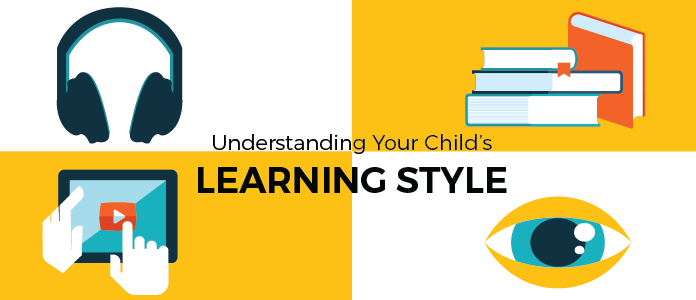In this post we will focus your attention on the different types of learning that suit children. Although children can learn in different ways, they will often have an innate preference for a certain learning style. This style allows children to absorb, process, and retain information in the most effective way. Therefore, understanding a child’s preferred learning style provides insight into his or her strengths and weaknesses, and allows you to improve the quality of their education.
How Do You Determine Your Child’s Learning Style?
An effective way of determining your child’s learning style is to observe his/her behaviour and interests. For example, a child who has an affinity towards maps and pictures likely prefers to learn visually. We have listed four main types of learning styles to help you identify your child’s preference. These include the following:
- The visual learner excels at tasks that use graphics, such as images, maps, and drawings.
- The reading and writing learner is a child who has a strong preference for learning by reading and writing. They are avid readers and excellent note takers.
- The auditory learner prefers to learn through listening and speaking. Individuals who prefer to learn through their auditory senses shine in situations such as class lectures and discussions.
- The kinesthetic learner is best when he/she is learning through his or her sense of touch. We often call kinesthetic learners ‘hands on’ individuals, and they can excel in activities such as science experiments and art.
Benefits of Knowing Your Child’s Learning Style:
At this point you might be wondering why you should care about learning styles. After all, most activities simultaneously present multiple forms of information such as sounds, visuals, and so forth. However, it is important to understand that a learning style dictates how a child handles information. Even when children are bombarded with different forms of information, they will still learn the most from the source that fits their learning style. Kids prefer certain styles of learning because it comes more naturally and is easier for them to handle. Therefore, understanding a child’s learning style can help personalize his/her learning, which in turn can maximize his/her learning potential and productivity.
School Life Benefits. Recognizing a child’s learning style can reduce the stress and frustration of his/her academic life. It allows kids to exercise their strengths and increase their performance on tests and exams. There is a best method for studying, and it is the method that fits a child’s learning style the best!
Personal Life Benefits. When you maximize children’s learning potential and decrease their stress levels, there are emotional-social benefits. Recognizing children’s learning style will give him/her insight into their strengths and weakness and allows them to take advantage of natural skills. Most importantly, it fosters a sense of control over their performance and allows for a growth in self-confidence.
Strategies For Learning Styles!
As mentioned, different learning styles facilitate different forms of learning. In order to take advantage of your child’s learning style, here are some tips on studying.
Visual Learners
- Create charts, diagrams, and graphs to organize information
- Develop concept maps to visualize ideas and their connections
- Make comics about concepts by hand or using software such as Bitstrips
Read/Write Learners
- Reread notes and information from textbooks
- Rewrite notes in order to strengthen memory of ideas and concepts
- Write short summaries of notes
Auditory Learner
- Record and listen to a summary of notes on a tape recorder
- Read notes out loud when alone and discuss the material with peers
- Spend time in quiet places to block out disruptive noises
Kinesthetic Learner
- Associate certain movements to ideas such as waving while studying one concept
- Organize ideas using physical surroundings such as writing concepts on paper and organizing them in relation to each other
- Manipulate objects and materials (e.g. Legos) to reinforce concepts
What About Learning Disabilities & ADHD?
Generally speaking, children with learning disabilities struggle with certain forms of learning. For example, a kid with dyslexia will struggle with reading based learning. However, it is possible to compensate for learning deficits by fostering learning styles that use other forms of information. In doing so, children are able to use their strengths to compensate for weaknesses.
In addition, children with ADHD can also benefit from applying their knowledge of learning styles. It is often difficult for children with ADHD to sit still and focus on lectures or readings. ‘Hands on’ learning, also called kinesthetic learning, may be the key to effective learning for children with ADHD. Having the ability to move around and engage with their surroundings in a practical manner can help to channel their energy in a productive way.
For more information, check out our previous posts on learning disabilities and ADHD
Fostering Learning Styles:
Children often figure out their learning style after an extended period of trial and error. Therefore, it is important to foster your child’s learning style. In order to ensure continuous growth, it is also necessary to realize that an individual’s learning ability is not static and can improve with effort. When praising your child, focus on his or her efforts and avoid solely praising his or her intelligence. Moreover, it is possible to strengthen learning styles by taking advantage of applicable learning strategies, such as the ones we have listed above. Expose your child to opportunities that allow him/her to apply his/her learning style. For example, if your child enjoys ‘hands on’ activities, provide him/her with the resources to explore his/her interests.
Remember – practice makes perfect!

